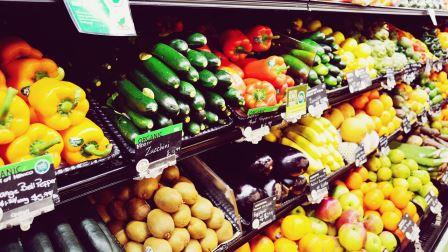Instacart Is Testing A Pickup-Only Option
Since its launch in 2012, Instacart has continually evolved its grocery delivery service. In the beginning, CEO Apoorva Mehta made deliveries via Uber. Then an independent fleet of couriers shopped for the items on customers’ lists and delivered them using their own vehicles. Eventually, in-store Instacart employees handed deliveries off to couriers. And now, in the latest iteration, Instacart is piloting an option in a handful of stores that involves no delivery and no Instacart workers.
Last week, the company launched a pickup-only option at a Whole Foods in Bedford, New Hampshire, and it has been running a similar program in California grocer Andronico’s Community Markets store in San Anselmo since April. In these partnerships, grocery store employees pack groceries, and customers pick them up. Instacart supplies the technology. The startup has also run similar programs with small independent grocers throughout the country.
“We’re looking for that sweet spot, to be most efficient,” Andronico’s Community Markets’s CEO Suzy Monford says of having her own employees, as opposed to Instacart, pick and pack groceries. “We know the store, we know where everything is, and we’re experts in quality.”
Though Instacart and its partners did not comment on the financial arrangement between them, the fee they charge customers for pickup will be less than what they charge for delivery.
Instacart has offered pickup at Whole Foods locations in two markets—in Boston and Austin—since 2014, but in these cases, its Instacart in-store shoppers still did the shopping and packing. Those stores also offered delivery. That version of the pickup program, which started as a pilot that promised to expand to other locations, stayed small, but Whole Foods’ chief information officer Jason Buechel says this pickup option will likely expand. “The research indicates interest,” he says. “The pilot will evolve.” Having customers pick up their groceries at the store allows them to pick out some items themselves, which, unlike delivery, allows for in-store impulse purchases.
In some stores, pickup makes more sense than delivery, Buechel says. “We have 450 stores,” he explains, “and we probably won’t have delivery in every store.” Andrew Nodes, the head of retail partnerships at Instacart, called the pickup-only options a “product extension.”
Instacart’s partners said that even in a case when Instacart does not supply workers (both Andronico’s and Whole Foods have other stores where delivery is an option, and Instacart in-store shoppers pick and pack the orders), the company’s support was still valuable to them. “It’s not just, here’s software, go use it,” says Nodes. The company creates a map of stores’ products and directs workers the best way to most efficiently pick items. It tracks a store’s inventory and suggests substitutions if an item isn’t available. Instacart also handles payment processing and the customer experience, as well as supporting both the retailers and their customers through phone and email when there are issues. If a store gets a rush of orders that its own employees cannot fill in a market that offers delivery, Instacart will send backup workers. “Retailers’ desire is to focus on being a good merchant, not on being a great tech company,” Monford says.
Even so, some stores, including Walmart and Kroger, have launched pickup services without partnering with a technology company like Instacart. Walmart recently announced it would also experiment with delivery, partnering with Lyft, Uber, and Deliv to take orders the last mile.
Last year, Whole Foods reportedly signed a five-year delivery partnership with Instacart after making an investment in the company.
We ride along with Instacart driver Laura Barnum
Fast Company , Read Full Story
(31)


